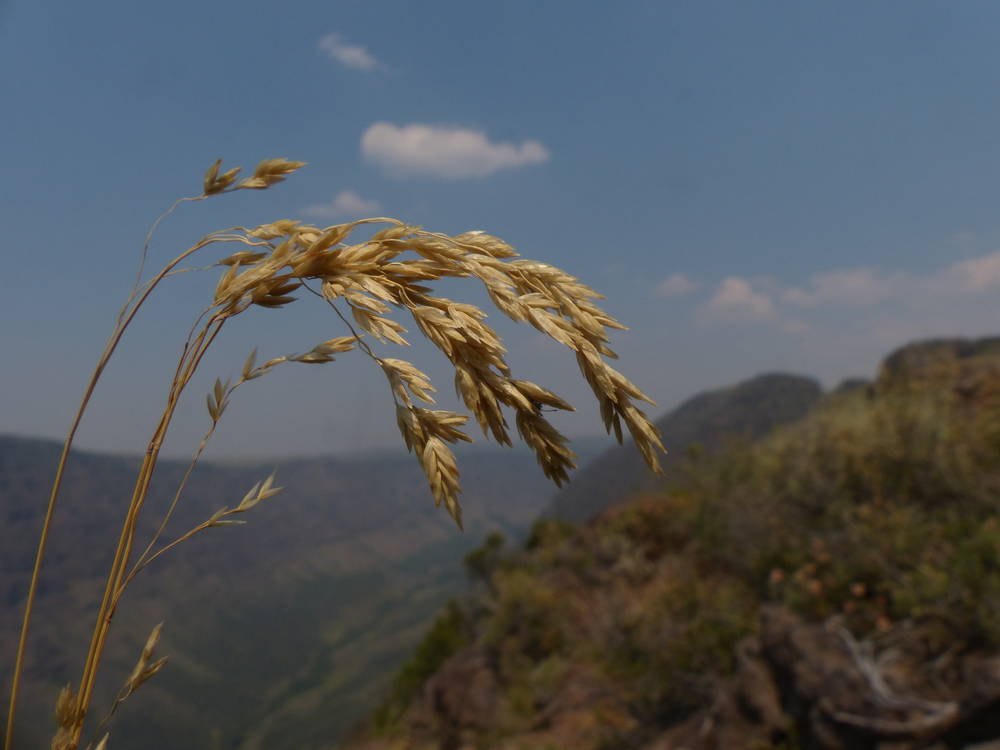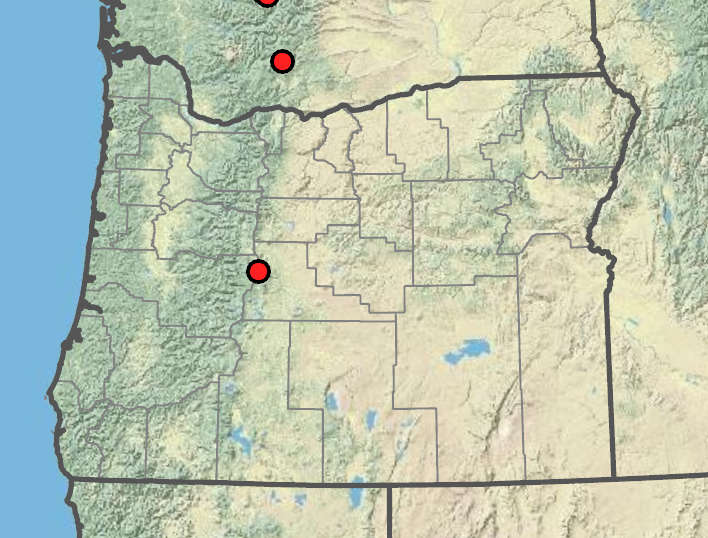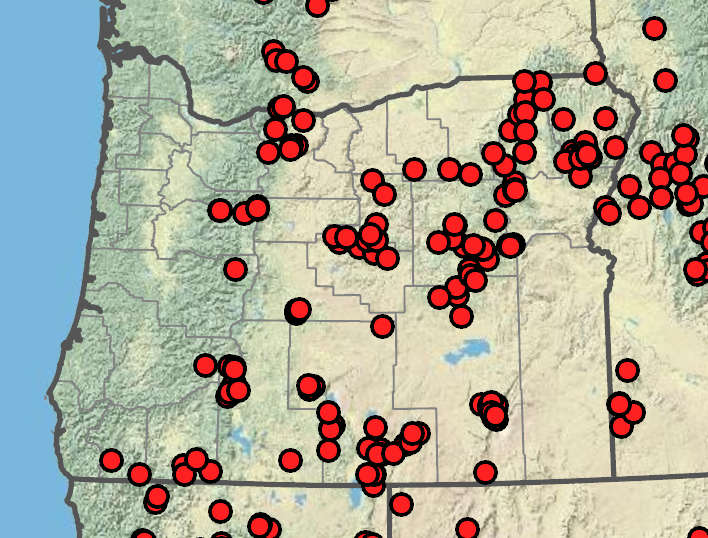Poa lettermanii
Poa wheeleri
Letterman's bluegrass
Wheeler's bluegrass
nodes terete, 1–2 exserted.
intra- and extravaginal or mainly intravaginal.
mainly extravaginal.
sheaths closed to 25% of their length;
ligules 1–3 mm;
blades flat or folded, or slightly inrolled, 0.5–2 mm wide.
sheaths closed 33–75% of their length, bases of basal sheaths glabrous; at least some basal sheaths with the distal 25% retrorsely hairy, collars of proximal leaves glabrous or with hairs of the same length as those of sheaths;
ligules 0.5–2 mm, ligules of sterile shoots of lower culm and sterile shoot leaves to 1.5 mm, blades of tillers folded or involute, infrequently flat, usually with upper surface densely scabrous to minutely hairy on and between the veins;
cauline blades flat or folded, 2–3.5 mm wide; smooth or sparsely scabrous, glabrous or hispidulous;
blades gradually reduced distally or middle blades longest; uppermost 1–10 cm long.
erect, contracted, 1–3 cm long, usually exserted from the sheaths;
branches erect to steeply ascending; slender; to 1.5 cm.
erect or nodding at the tips; ovoid to pyramidal, loosely contracted to open, 5–12(18)cm, with 20–70 spikelets, with 2–5 branches per node;
branches ascending to spreading or reflexed; lax; (1)1.7–6.5 cm long, with 2–8(12) spikelets.
3–4 mm, green or purple;
florets 2–3;
rachilla internodes less than 1 mm long; smooth.
to 3.5 times as long as wide, 5.5–10 mm, with 2–7 florets;
rachilla internodes smooth or scabrous, glabrous or sparsely to densely hispidulous.
lanceolate to broadly lanceolate, 2.4– 3.6(4) mm, usually equaling or exceeding the lowest lemma, frequently exceeding the upper florets;
lower glumes 3-veined.
lanceolate;
lower glumes 1–3-veined; less than half as long as adjacent lemmas.
glabrous.
glabrous.
lanceolate, 2.5–3 mm long, distinctly keeled; thin, glabrous;
keels and marginal veins rarely sparsely puberulent;
tips acute.
lanceolate, distinctly keeled, 3–6 mm;
keels and marginal veins glabrous or sparsely softly puberulent to short-villous; area between veins glabrous or hispidulous, infrequently puberulent; smooth or finely scabrous;
margins glabrous.
0.2–0.8 mm.
usually vestigial and 0.1–0.2 mm or aborted late in development and up to 2 mm, rarely normal.
=14.
=56, 63, 70–91.
Poa lettermanii
Poa wheeleri
Rocky alpine ridges and ledges. 2900–3100m. Casc. CA, ID, NV, WA; north to British Columbia, east to CO. Native.
This is a small, cespitose, alpine bluegrass, most similar to P. suksdorfii. Both have subequal glumes that tend to be longer than the lowest lemma, but P. suksdorfii has larger spikelets with longer glumes. In Oregon, P. lettermanii is known only from high elevation on South Sister in the central Cascades.
Mesic montane conifer forests, subalpine meadows. 100– 3000 m. BR, BW, Casc, Col, ECas, Lava, Sisk. CA, ID, NV, WA; north to British Columbia, northeast to Manitoba, southeast to NM. Native.
Poa wheeleri is a common, widespread, native bluegrass of montane to subalpine habitats in eastern and southwestern Oregon. The lower leaf sheaths have dense, short, downward-pointing hairs, and blades on vegetative shoots are involute and pubescent on the inner surface. Nearly all plants are pistillate, usually with vestigial anthers. Plants with glabrous upper leaf sheaths can be misidentified as P. nervosa, which has more open inflorescences and collar hairs longer than the sheath hairs, or P. chambersii, which has entirely glabrous sheaths on all leaves, even the lowest. If the lower leaf sheaths are not collected, P. wheeleri can be confused with slightly rhizomatous individuals of P. cusickii. Poa pratensis, however, has finer-textured, more curved inflorescences, shorter spikelets and lemmas, and long cobwebby callus hairs.
Rob Soreng, Barbara Wilson, Richard Brainerd, Nick Otting
Rob Soreng, Barbara Wilson, Richard Brainerd, Nick Otting
- Local floras:
BC,
CA,
OR,
WA
- Local Web sites:
CalFlora,
CalPhotos,
Flora NW,
PNW Herbaria
WildflowerSearch
iNaturalist (observations)
USDA Plants Database
- LBJ Wildflower Center
- SEINet
- Plants of the World Online
- Encyclopedia of Life
- Wikipedia
- Google Image Search
- Local floras:
BC,
CA,
OR,
WA
- Local Web sites:
CalFlora,
CalPhotos,
Flora NW,
PNW Herbaria
WildflowerSearch
iNaturalist (observations)
USDA Plants Database
- LBJ Wildflower Center
- SEINet
- Plants of the World Online
- Encyclopedia of Life
- Wikipedia
- Google Image Search




